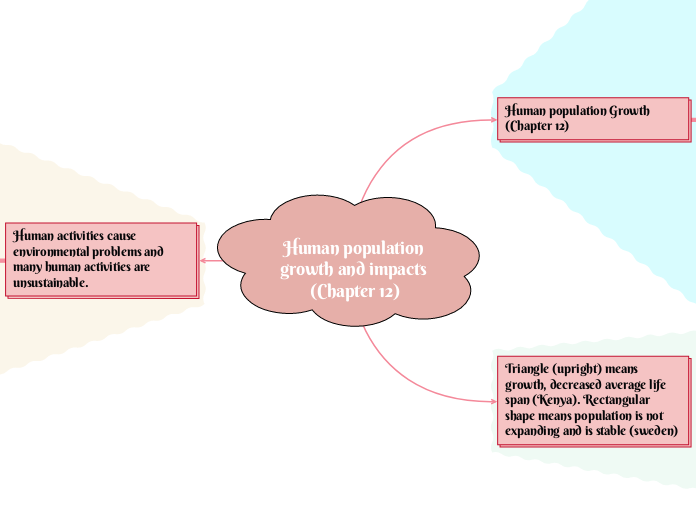Human population growth and impacts (Chapter 12)
Human population Growth (Chapter 12)
Demography- the study of human populations, including population size, density, distribution, movement, and birth and death rates.
Doubling time- the time it takes for a population to double in number
Trying to summit Mount Everest
Population pyramids: bar graphs that shows the age distribution in a population, which demographers use to study a population.
Population grow faster because of medical advancement, longer life, technology, and better shelter
Prior to modern technology, the human population size was stable; however, it is now growing exponentially.
The age structure of a population varies from country to country.
The ecological footprint of industrialized countries is much greater than the ecological footprint of developing countries.
Triangle (upright) means growth, decreased average life span (Kenya). Rectangular shape means population is not expanding and is stable (sweden)
Triangle (inverted) means the population is shrinking
The wealthiest 20 % of the world’s population consumes 86% of the world’s resources and produces 53% of the world’s CO2 emissions
Ecological footprint- the amount of productive land that is required for each person in a defined area, such as a country, for food, water, transportation, housing, waste, management, and other requirements.
Human activities cause environmental problems and
many human activities are unsustainable.
Preserving biodiversity is important for the overall health of all populations on Earth.
Human activities have decreased biodiversity
Many solutions are needed to provide the needs of a growing human population and, at the same time, preserve the environment.
Burning coal to provide energy creates toxins
